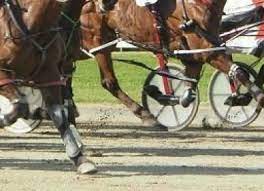Over the past weeks, I have received several comments and questions on the subject matter regarding everything from “no takeout” at the harness racing track for on-track patrons to the morning line.
 Some were “pro” and some were “con” but all deserving of my attention and comments.
Some were “pro” and some were “con” but all deserving of my attention and comments.
From Adolph W. comes the comment, “I don’t see how a racetrack can afford to give up the takeout if they want to survive…”
Thanks for your comment, Adolph.
First, if you look at the results and compare the purses on any particular racing program, there are very few tracks that can survive on handle alone.
Of course, there’s the exception here in the States known as The New Meadowlands but, sadly, there is only one of them.
If you check the purses versus the daily handle, on many occasions—probably the vast majority these days—the purses are larger than the daily handle.
In fact, the total handle is, many times, significantly under the total purses paid.
The racino influence and legislatures have filled that void…but there is always that lurking threat that both of these influences could be a victim of “racetrack global warming” at any time.
So, takeout means, virtually, nothing and purses would be, virtually, the same with or without it.
Florida’s Pompano Park is the latest tragic example with that historic track shuttered due to land value (millions per acre) and development.
It’s not surprising that politics played a key role in its demise as the Governor knocked out voters—who voted casinos to be built in the first place—out of the equation by signing the decoupling bill.
(Yes, it seems that political donations take precedent over the lives and livelihoods and families with 10,000 to 15,000 people affected.)
Back 70 years ago, Frederick and Mary Frances Dodge Van Lennep came to Pompano Beach, Florida where the population was barely over 5,500.
The Van Lenneps MADE Pompano Beach which, today, has a population well over 110,000…and business and politics pushed history and The Van Lenneps aside for greed.
I guess that’s the way Polly ticks.
But let’s get back to Adolph, again, and his “takeout” assessment.
Who HASN’T received $20 in free play enticing you to come to the casino and play?
In Florida, Pompano’s casino had given away over $11,000,000 in promotional slot play through August.
Probably 95-97%% or, possibly, even more of Pompano Park’s average handle was done off track.
What’s it mean?
If a patron came to the track and bet, say, $100 for the night, the savings would be around that same $20…just like giving the slot player an enticement to play…but there is a distinct advantage for the on-track player if he or she stumbles into a winning bet.
If the player has $10 to win on a 4 to 1 shot, the payoff will be between $50 and $54. That same player off-track has that same sawbuck to win, the payoff would be between $41.40 and $43.60.
This takeout is peanuts to any racino and can be such a benefit to all parties.
Wouldn’t that be enough incentive to go to the track?
The turnover in betting dollars would increase handle and, quite possibly, enhance other revenue streams for the casino.
CASINOS SHOULD EMBRACE RACING…not throw it to the wolves.
Rich S. from the Chicago area wrote, “I really enjoyed your morning line story (Thank you, Rich!) but I noticed that, when I added up the numbers on the tote board, they added up higher than your ‘magic’ numbers. Can you explain?
Sure, Rich, the magic numbers are for the morning line only.
When you look at the tote board, and you see, say, 7 to 2, you don’t know whether that horse is an even 7 to 2 (3.50 to 1, which equals 22.22 points) or as high as 3.90 to 1, which equals 20.4 points.
Every dime to a dollar in odds makes a difference in the point total.
An even money shot, 1 to 1 gets 50 points…while an even money shot that is actually 1.10 to 1 would get 47.62 points, if you could show this on a morning line.
One other thing, when an entry is 1 to 9 on the board, it USED to mean that, in reality, it was 1 to 10 (because there aren’t enough bulbs on the board to put 1:10.
While that is pretty much true, there is one exception…and that’s in Kentucky where the “breakage” has been cut to a single penny.
So, in the Bluegrass State, you can actually have an entry pay 1 to 9 ($2.24) or 1 to 8 ($2.28) or 1 to 7 ($2.32) or 1 to 6 $2.36).
And for you folks in New York, their breakage is a nickel, instead of a dime, so you could see odds of 1 to 4 ($2.50), 3 to 4 (3.50), etc. on your tote-boards.
Your comments are always welcome.
by John Berry, for Harnesslink

 USA
USA Canada
Canada Australia
Australia New Zealand
New Zealand Europe
Europe UK / IRE
UK / IRE



